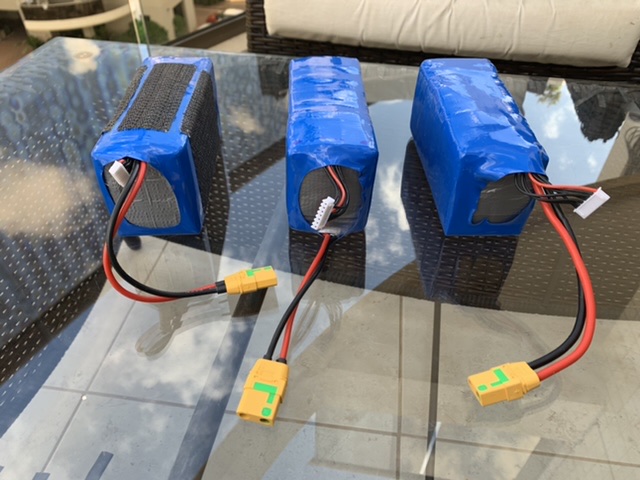
Hi everyone,
While getting some treatments in the hospital I got involved in a thread about Li-Ion batteries and it simply gave me an idea to start a little on going blog on this issue.
Lately I’ve built my self a few 3C 12000 mah 6S4P Li-Ion batteries for my V8 Quadcopter to be used 2 bricks at a time both for redundancy and more importantly with one brick only the discharge rate will be too high and may destroy my packs very fast.
basically these batteries are rated at 10C by the manufacturer but my design for usage is for 3C max, so if the total discharge rate of my quad is higher than 36000mah (40-50amp/h) I would have to be seriously worried about the temperature of my packs. So by using two packs in parallel I can pull 72000mah and stay safe.
Disclosure- I am not a specialist in this field simply put just technical person with some understanding and truly hope my findings are correct, however do comment for any mistakes and misunderstandings I have.
The big difference between Li-Ion and LiPo batteries is of course the chemicals which stores the electric charge inside the battery (density) and the effect of how fast the power is discharged from it.
Li-Ion batteries has a bigger density and lower cutoff (point of no return) for the battery usually at 2.5-2.8v
where LiPo at 3v, below the cutoff you kill the bat.
LiPo can discharge much faster than Li-Ion and that’s why it’s the de-facto standard for UAVs, usually the C rating for LiPo starts at 15C where Li-Ion 1-10 max.
So what is this dreadful C rate of the battery?
It is the number in the manufacturer data sheet that represents the maximum amperes that can be discharged from the battery. So a 1C 3amp/h battery can discharge 3000 milliamperes in one hour and a 2C 3amp/h battery can discharge 6000 milliamperes in one hour (3000 X 2 = 6000ma / 1000 = 6amp) and one more sample a 15C 3000 milliamperes bat can discharge 3000 X 15 = 45000 / 1000 = 45 amperes in one hour.
So this is the basic math, however there are more facts in the manufacturer’s data sheets, like temperature cutoff which means the highest temperature the battery can get before damaged (usually it requires temperature protection).
Got to go the chemotherapy now, to be continued 
 , so I couldn’t continue the article, however to answer your question, yes I use the Sony/Murata US18650VTC6 which is a 3120mah nominal capacity and a C rating of 10C.
, so I couldn’t continue the article, however to answer your question, yes I use the Sony/Murata US18650VTC6 which is a 3120mah nominal capacity and a C rating of 10C.